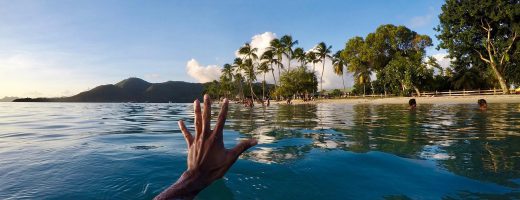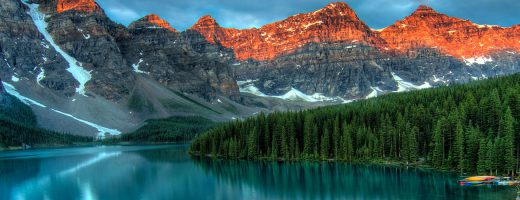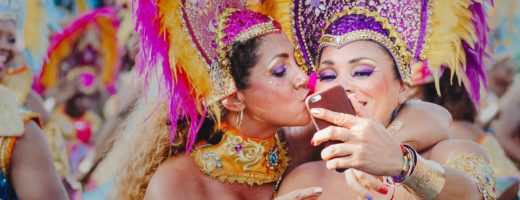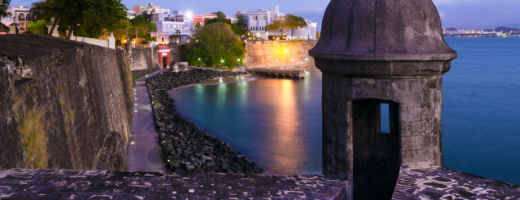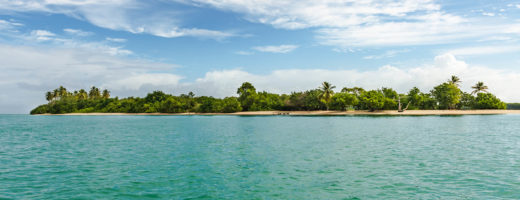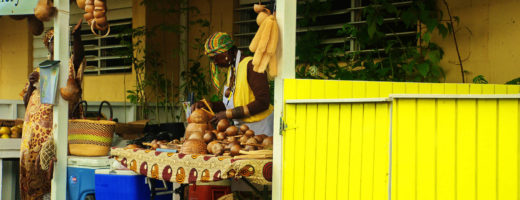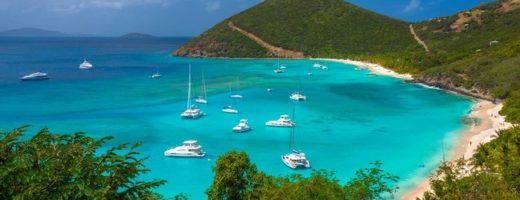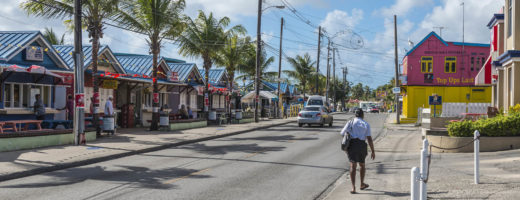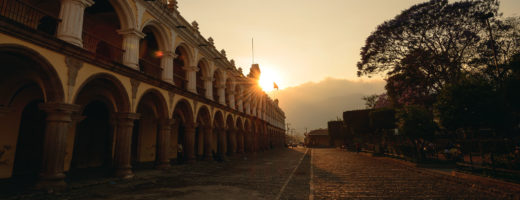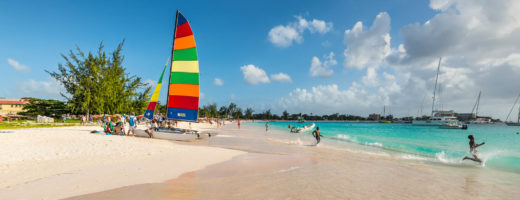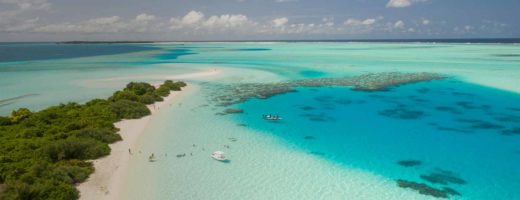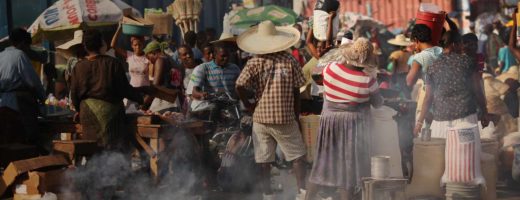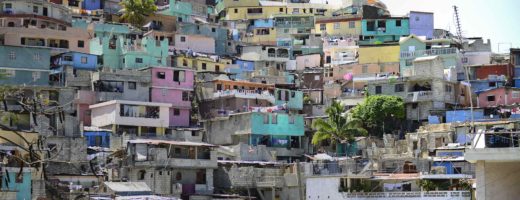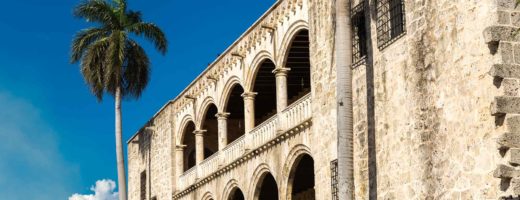In many Caribbean island-nations and territories, LGBT (gay) life can consist of a rosy romantic cruise or a languid lounge on a picturesque beach topped with a gay party in the evening. But not for all, especially native born LGBT citizens whose families descend from indigenous Caribbean cultures such as Taino, Arawak, Caquetio (and a dozen others) as well as Spanish and African cultures where homosexuality is not usually a welcome trait. There is wide variety of gay people in the Caribbean but the widest separation is between northern American and European white tourists and the local-born ‘natives’ of these islands. We are everywhere and we are everywhere very diverse.
Gay Life in Netherlands Antilles (Bonaire)
History and Geography Bonaire Island is not big but it’s not a speck either; it covers 111 sq mi (294 sq km) which is enough for a small colony of locals. expats and visitors. It is is a special ‘municipality’ of the Netherlands, a mere 4416 miles (7108km) away so it not likely the Queen’s
Gay Life in Netherlands Antilles (Curacao)
Curacao is a small Caribbean island that is an independent country. It is not hard to quickly discern the attitude here toward LGBT people–at least to tourists to whom the welcome sign reads: “Welcome. “Live and Let Live” or “Biba i laga Biba”. But homophobia is an undercurrent here as well and natives do not come flying out of the closet.
Gay Life in Puerto Rico
Puerto Rico is the most gay-friendly island of all the nations, territories and dominions of the Caribbean. Perhaps Havana, Cuba has more LGBT people but the scene there is muffled by the authorities who are willing to look the other way but only up to a point. No such restraint appears in PR which is an overseas territory of the USA and therefore is freer and happier place to be gay.
Gay Life in Trinidad & Tobago
Trinidad & Tobago has beautiful Caribbean scenery, beaches, climate and lush green hills–and industry. It’s another one of the many tropical islands that make up the archipelago that stretches from Venezuela to Cuba. Although homosexuality is illegal the laws are mostly ignored.
Gay Life in U.S. Virgin Islands
The British Virgin Islands and the US Virgin Islands are among the more gay welcoming islands in the Caribbean, but are not without resistance and secret lives. For the most part they lack the conflict and drama found on other islands which discriminate or criminalize same-sex activity. Throughout most Caribbean islands, even though homosexuality is legal, there are varying degrees of native Afro-Caribbean homophobia which can make life uncomfortable for gay citizens and tourists. However, most of it is silent and invisible and most tourists will hardly notice.
Gay Life in British Virgin Islands
The British Virgin Islands and the US Virgin Islands are among the more gay welcoming islands in the Caribbean, but are not without resistance and secret lives. For the most part they lack the conflict and drama found on other islands which discriminate or criminalize same-sex activity. Throughout most Caribbean islands, even though homosexuality is legal, there are varying degrees of native Afro-Caribbean homophobia which can make life uncomfortable for LGBT citizens and LGBT tourists. However, most of it is silent and invisible and most tourists–gay or not–will hardly notice.
Gay Life in Dominica
Gay Life in Dominica is similar to other gay-unfriendly island-nations in the Caribbean. It is both known and unknown, visible only to those who want to know and invisible to those who reject it as anything acceptable. It is a cat-and mouse game of pretending to be normal in a heterosexual culture (many gays marry
Gay Life in Saint Kitts & Nevis
Homosexuality in Saint Kitts and Nevis is like homophobia—hidden and disguised behind smiles, dollars, pretty beaches and friendly hotels and restaurants. But the shadow side of gay life in Saint Kitts & Nevis is not so pretty or nice. Double Standard Not unusual for a homophobic nation dependent on tourist dollars, Saint Kitts and
Gay Life in Barbados
Barbados is one of many small Caribbean countries where homosexuality is illegal but is mostly ignored since so few people are ‘out’ in public. It is ignored and also ill-informed with anti-gay opinions running high, if one is asked. Mostly the topic is kept in silence as is the personal life of LGBT citizens.
Anitgua & Barbuda Attitudes Toward Gays
It doesn’t take long to discern the public attitudes of the twin island-nations of Antigua and Barbuda toward homosexuality. They don’t like it and they show it in their laws. Antigua and Barbuda Same-sex sexual acts are illegal and carry a penalty of 5 years imprisonment. Anal sex carries a penalty of 15 years. Although
Homophobia Kills–International Day Against Homophobia (IDAHO), May 17, 2011
By Richard Ammon GlobalGayz.com May 17, 2011 International Day Against Homophobia If you knew this child had a homosexual orientation would you refuse to feed him? to clothe him? to shelter him? put him out of the family? tell him he could not desire love? Think about it: such rejections would kill him. It doesn’t
World’s Largest Gay Party Boat Sails Today Into Caribbean Homophobic Waters–Bahamas
By Richard Ammon GlobalGayz.com Feb 6, 2011 The world’s largest cruise ship, Allure of the Seas, owned by Royal Caribbean sets sail with 5400 LGBT passengers in February 6-13 for a week of sun, fun, camaraderie and validation. Anyone who is shy about publicly showing their affection to their same-sex partner, friend or a new
Religious Fairy Tales vs Gay Marriage
Richard Ammon GlobalGayz.com May 13, 2010 Today’s news brought a hysterically horrid report about the Pope in Portugal. He called for pastoral action to tackle abortion and same-sex marriage, which he called “some of today’s most insidious and dangerous threats to the common good“. (Insidious means: harmful but enticing; seductive; having a gradual and cumulative
Gay Jamaica: Crime and Punishment
Intro: The news from Jamaica is not good. It is one of the least gay-friendly countries in the western hemisphere. Laws against homosexuality are actively enforced bringing the wrath of the conservative government and street gangs on offenders. Attacks are not uncommon against gays or people suspected of being gay. In the Jamaica News and
Anthony’s Story: Gay in Jamaica
Summer 2009 By Anthony My name is Anthony, I’m 27 years of age and i live in Jamaica which is in the Caribbean. I just want to share with you what living as a Gay is like in Jamaica. I am gay and my life has been turned up side down all because I’m gay,
Being Gay in Turks & Caicos Islands
A Conversation with a Resident about Being Gay in the Turks & Caicos Islands Intro Eddi is a resident of Turks & Caicos Islands (TCI) who originally wrote to GlobalGayz inquiring about gay life in Bhutan, In the course of correspondence he revealed he lived in TCI. Since there is virtually nothing on the Internet
Gay Haiti
Intro: Probably the most immediate and visual source of knowledge about the LGBT life in Haiti is the 2001 film ‘Of Men and Gods’ which documents the discreet world of gays and transvestites in this country where homosexuality is legal but not tolerated by the mostly Christian culture. Eighty percent of the country is Catholic and another fifteen percent are Protestant; needless to say, the Biblical curse is heavily upon gays here. Yet more than half the population also indulge in voodoo beliefs and rituals where it’s the spirit that matters, not the gender or orientation.
During the reign of the Duvalier dictators (1957-86), as well as today, Haitian gay citizens are forced to walk a shadowy line between revealing themselves to a select few friends and living discreetly in the larger disapproving heterosexual society.
Posted here are four stories about life in Haiti from different perspectives: (1) my own story based on a visit to Haiti , (2) a gay Haitian-American man’s testimony, (3) a commentary about gays and voudou, and (4) an article about Haiti’s economic conditions.
The Taxis in Haiti’s Port au Prince
By Richard Ammon March 2003 Updated July 2006 Also see: Gay Haiti Stories Gay Haiti News & Reports 2002 to present Gay Haiti Photo Galleries A couple of years ago I took several taxi rides in various Japanese cities. The cars were newer models–virtually all white Toyotas–spotless inside and out; the seat backs had doilies
Haiti – Port au Prince
Haiti occupies the island of Hispaniola, along with the Dominican Republic, in the Caribbean The total area of Haiti is 27,750 square kilometres (10,714 sq mi) and its capital is Port-au-Prince. Haiti’s regional, historical, and ethnolinguistic position is unique for several reasons. It was the first post-colonial independent black-led nation in the world, as well
Haiti – Jacmel & Port-au-Prince
Haiti occupies the island of Hispaniola, along with the Dominican Republic, in the Caribbean The total area of Haiti is 27,750 square kilometres (10,714 sq mi) and its capital is Port-au-Prince. Jacmel is a serene port town with an estimated population of 40,000 and growing. The city has not changed much since the late 19th
Dominican Republic – Santo Domingo (1)
The Dominican Republic is the site of the first permanent European settlement in the Americas; its capital Santo Domingo was also the first colonial capital in the Americas. It is the site of the first cathedral, university, European-built road, European-built fortress, and more. For most of its independent history, the nation experienced political turmoil and
Jamaica – Montego Bay
Jamaica is formerly a Spanish possession known as Santiago, it later became the British West Indies Crown colony of Jamaica. It is the third most populous English-speaking country in the Americas, after the United States and Canada. Jamaica slowly gained independence from the United Kingdom and in 1958. Jamaica’s prosperity has diminished since the 1980s
Jamaica – North Coast
Jamaica is formerly a Spanish possession known as Santiago, it later became the British West Indies Crown colony of Jamaica. It is the third most populous English-speaking country in the Americas, after the United States and Canada. Jamaica slowly gained independence from the United Kingdom and in 1958. Jamaica’s prosperity has dimished since the 1980s
Jamaica – Noel Coward’s House
Noel Coward, the multi-talented British playwright, actor, songwriter raconteur, first visited Jamaica in 1944 on a two week holiday. The and peace of mind he found in Jamaica caused him to refer to it as his "dream island" and he vowed to return one day. Four years later he rented fellow author Ian Fleming’s estate,

